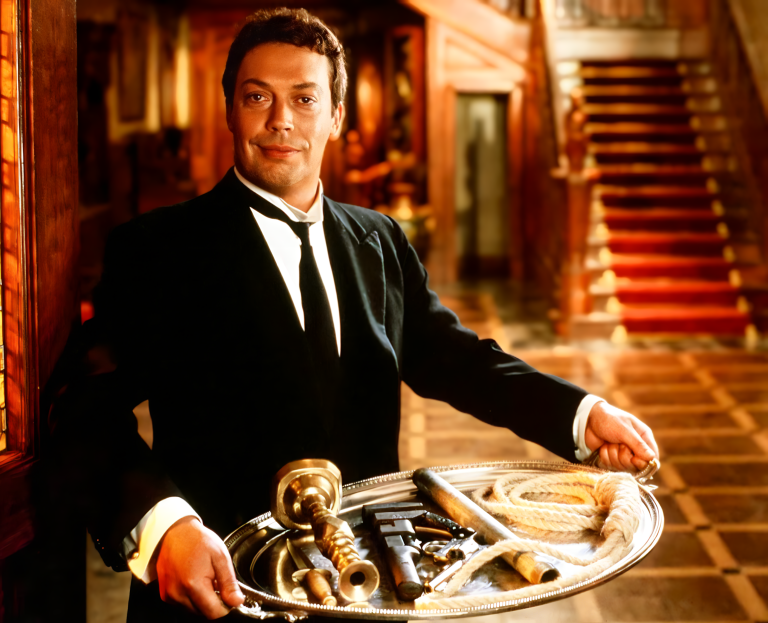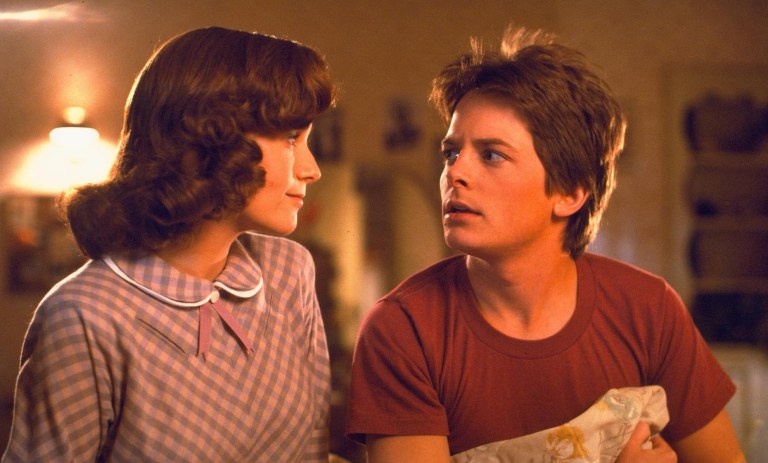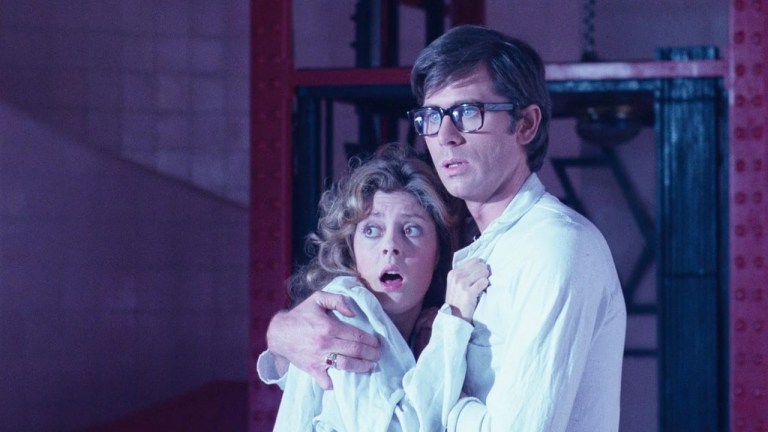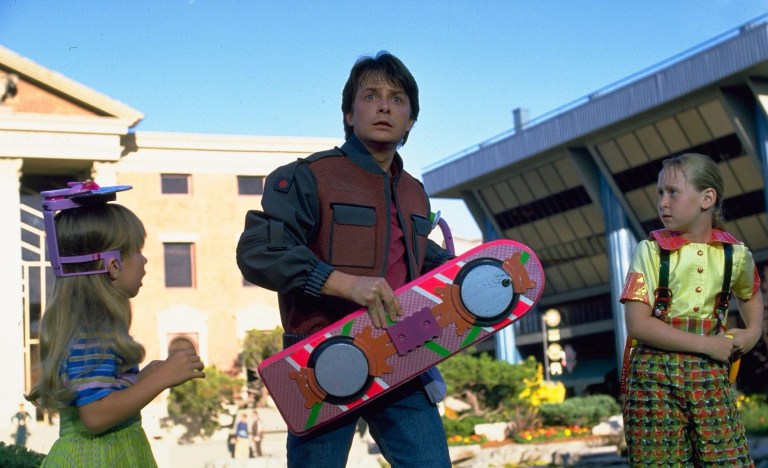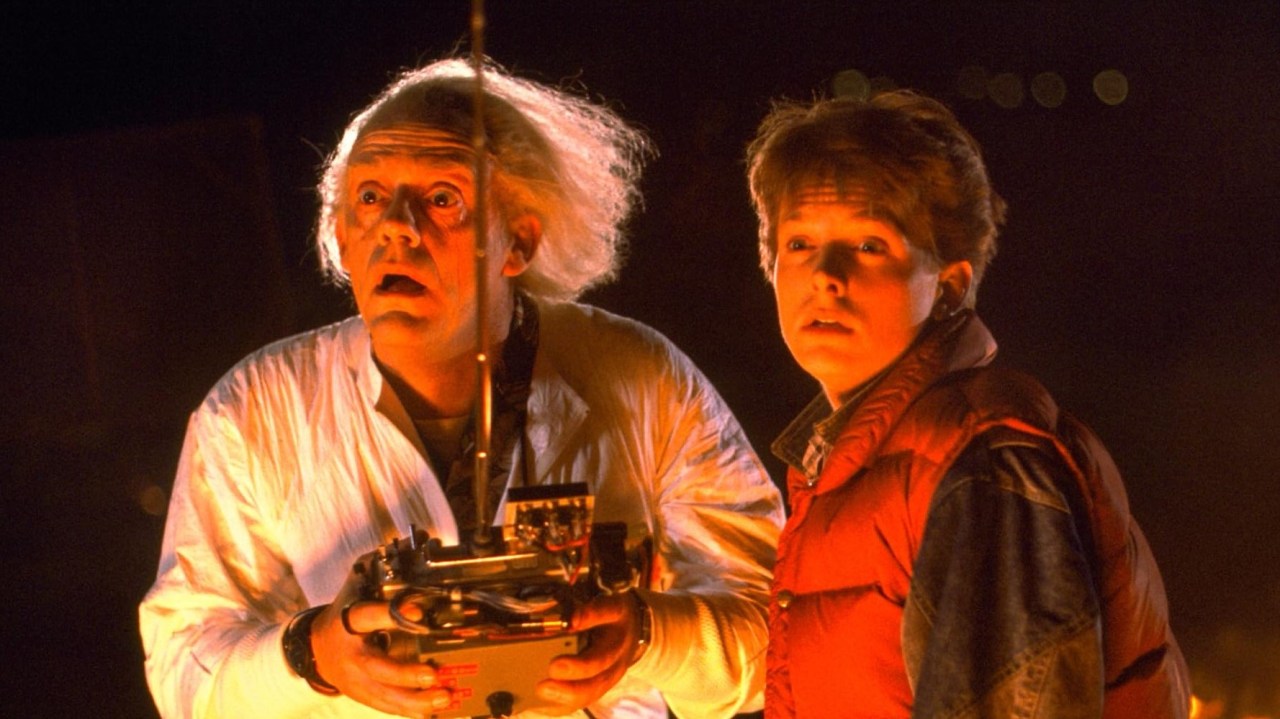
‘Back to the Future’ At 40: A Look Back At the Most Iconic Sci-Fi Comedy Of The 1980s
Our journey, rather ironically, begins in the summer of 1985.
Acid jeans and permed hair are all the craze. Wham! and Madonna is lighting up the radio airwaves with hit singles like “Careless Whisper” and “Like a Virgin.” Cabbage Patch Kids and Rubik’s Cubes are tucked away in the corner of every American household, all the while Ronald Reagan focuses on winding down the Cold War and the U.S. First Lady urges kids to “just say no” to drugs.
As the summer temperatures continue to climb and the Fourth of July draws near, a brand-new film enters theaters – a cheerful and surprisingly original sci-fi comedy dubbed Back to the Future. Led by a little-known sitcom actor named Michael J. Fox and a veteran character actor by the name of Christopher Lloyd, the film is an instant critical and commercial success, with critics praising the movie for its writing, humor, creativity, electric score, and vivid performances, allowing it become the highest-grossing release of 1985.
Jumping Ahead to the Present
Now, we jump back – back to the future. It’s 2025, and the world is celebrating the historic 40th anniversary of Back to the Future’s release. In the four decades since its theatrical debut, the film’s prestige has only continued to grow. Its unparalleled success has paved the way to two immediate sequels, along with numerous video games, theme park attractions, animated TV series, and a highly praised stage musical that takes Broadway by storm.
It is, in many ways, the ultimate cinematic achievement of the 1980s, its fame and popularity rivalling other noteworthy releases like The Breakfast Club or Ferris Bueller’s Day Off. But what is it about this whimsical 1985 comedy that captivates us? Why do we tune in and refuse to change the channel every time we see Marty McFly on our TV? And most importantly, what does Back to the Future’s legacy tell us about the past state of pop culture, giving us a glimpse into where the entertainment medium might be headed next.
“This Is Getting Heavy”
Like all the best movies, it’s impossible to single out just one reason that might explain Back to the Future’s success over 40 years later. Rather, like its preceding summer blockbuster Jaws, it’s a combination of multiple factors that account for the film’s popularity. Remove just one of those things, and it’s hard to say whether the movie would ever have risen to its current iconic status. (Although it’s highly unlikely that it would have.)
Take, for example, the unique chemistry formed between Christopher Lloyd and Michael J. Fox. In spite of their obvious age difference, something about the wholesome camaraderie between Doc Brown and Marty McFly just seems so eminently agreeable. Watching them banter and bicker their way across the screen, all the while solving the temporal crisis they find themselves in, they almost resemble a cosmic cross between Obi-Wan and Luke, Gandalf and Frodo, and Martin and Lewis.
Alternatively, one could look at the easily identifiable score of Alan Silvestri. Giving the film its tonal backbone, Silvestri’s soundtrack provides the overall language of the movie, outfitting the narrative with a high-stakes, triumphant atmosphere reminiscent of John Williams’ work on Star Wars or E.T.
If not that, perhaps viewers need only look at the ingenious writing of Bob Gale and director Robert Zemeckis. Providing what might most screenwriters often describe as “the best script ever written,” Back to the Future comes packed to the brim with numerous details illustrating the writer’s meticulous understanding of their text. As a result, each subsequent rewatch ushers in a new piece of trivia audiences might have missed in earlier viewings, such as Twin Pines Mall becoming Lone Pine Mall after Marty crashes into one of the two eponymous trees upon his entry into 1955.
“You Built a Time Machine … Out of a DeLorean?”
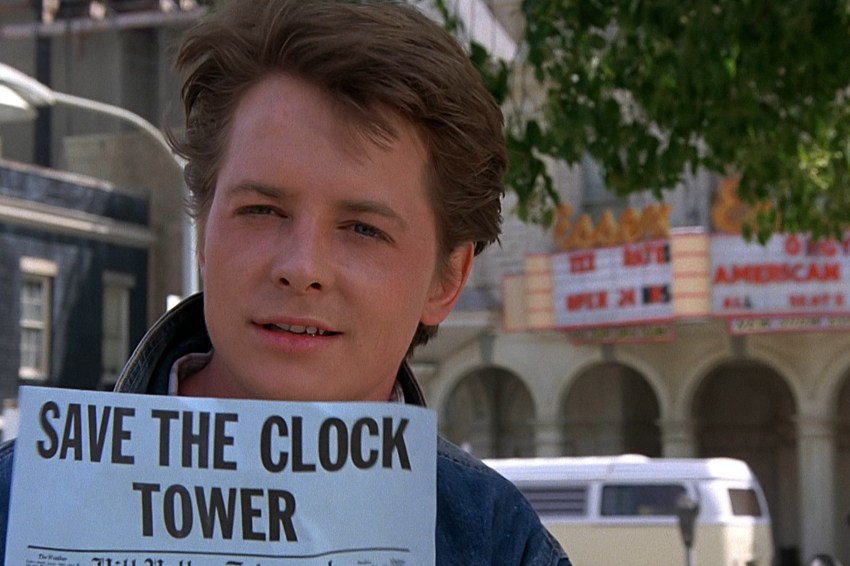
It’s a combination of all the aforementioned characteristics that make Back to the Future so enjoyable to watch again and again and again, along with dozens of other factors we don’t have the time to mention. (Lea Thompson, Crispin Glover, Thomas F. Wilson, Biff’s hilariously botched one-liners, the relatable story of an unsuspecting hero standing up to their lifelong bully, etc.)
But there’s also something else worth mentioning about Back to the Future. Something far more endearing about the film’s success as a narrative and immortal piece of entertainment. Just as Marty himself travels back in time to the 1950s, viewers themselves are able to step back to a simpler time every time they press play on this imaginative 1985 masterpiece. A time when Van Halen and Huey Lewis were playing on the radio, a time when Walkmans were the main source of portable music, a time when ridiculously oversized orange vests were considered “fashionable” among contemporary standards.
While there’s no denying Back to the Future’s timeless narrative, the movie’s dated anachronisms themselves remind us of simpler times, causing us to crack a smile when Marty asks for a Pepsi Free or Tab soda or when we see the incredibly ‘80s DeLorean pop up on-screen. Just as the film portrays the ‘50s as some far-away time period that can only exist in cinematic recreations, so too does Back to the Future itself act as a time capsule for the 1980s, affording us a chance to fondly recall the way things were as a way to escape the way things are today.
